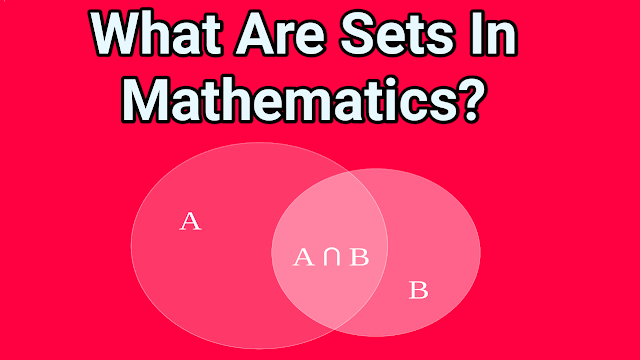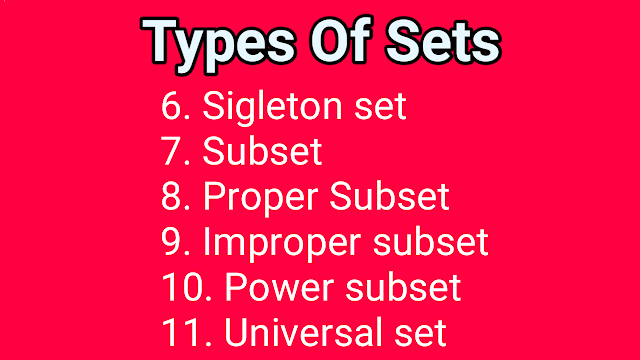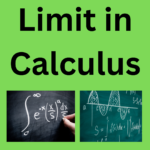There are various types of sets. In Mathematics, a set is defined as; “A collection of well-defined and distinct objects is called a set”. The entries of a set are known as its objects. If you want to get a clear idea about sets, it is necessary that you should have enough idea about well-defined and distinct objects. In Mathematics, well-defined and distinct objects mean those objects which are not equal to other objects. For example, if we say that set of natural numbers, the entries of the natural numbers’ set are 1,2,3,4, and so on. 1, 2, 3, and 4 are well-defined and distinct objects because 1 is not equal to 2 and vice versa. On the other hand, if we say that the set of naughty students in the class, we can’t distinguish between naughty students in the class. In other words, the entries of this set can be equal to each other. As these entries of the set are not well-defined and distinct, therefore, it is not a set.
How To Represent Sets in Mathematics?
There is also a specific method to represent sets in mathematics. In order to represent sets in mathematics, we have to use ‘Capital alphabets’ i.e. A, X, L, and K, etc. On the other hand, we can use ‘Small alphabets’ i.e. a, j, e, and n, etc for the representation of the entries of a set. Anyhow, we can use numerals and symbols to represent the entries of the sets. We can use braces or curly brackets to enclose entries of the sets. Here, we have discussed some important examples of sets.
A = {17, 20, 29}.
B = {28, 29, 30, 31, 32…..}.
C = {49, 50, 51……..}.
Ways To Represent Sets in Mathematics
There are three possible ways to represent sets in mathematics. We have explained these three types of sets.
♦ Tabular Form
The method of representing the set in which we list all the elements of the set and these elements of sets are separated by commas. After listing these elements, we enclose these elements in the curly brackets. Here, we have discussed some essential examples of sets in tabular form.
A = {6, 7, 8, 9, 10}.
B = {10, 12……}.
C = {7, 9, 11……}.
♦ Descriptive Form
The process of representing the sets in the form of words is known as descriptive form. Here, we have discussed some essential examples of the descriptive form of sets.
A = Set of nine birds.
B = Set of five universities in the UK.
C = Set of five cities in the UK.
D = Set of six colleges in London.
♦ Set Builder form
The presentation of the sets in the symbolic form is the set builder form. Here, we have explained some essential examples of the representation of the sets in set builder form.
A = {x | x ∈ N ^ x > 13}.
B = {x | x ∈ W ^ x > 9}.
C = {x | x ∈ N ^ x > 7}.
Related post: Types of triangles with pictures
Different Types of Sets in Mathematics in Tabular Form
Types of Sets in Mathematics
There are different types of sets in mathematics. Here, we have explained different types of sets in Mathematics.
1. Empty or Null Set
A set that has no element is an empty or null set. In order to represent an empty or null set, we use the symbol {} or ∅. We can represent a null or an empty set in the following way;
A = ∅
B = {}
B = {}
2. Finite Set
A set that has a finite number of elements or a limited number of elements is a finite set. Here, we have explained some essential examples of finite sets.
A = Set of first ten natural numbers.
B = {1, 11, 17, 29}.
C = {x | x ∈ W ^ x > 19}.
C = {x | x ∈ W ^ x > 19}.
3. Infinite Set
A set that has an infinite number of elements or an unlimited number of elements is an infinite set. Here, we have explained some essential examples of infinite sets.
N = Set of natural numbers.
B = {17, 18, 19……}.
4. Equivalent Sets
Two sets are equivalent sets if these sets have an equal number of elements. We can represent two equivalent sets by using the symbol ↔. Here are some essential examples of equivalent sets.
A = {1, 2, 14}.
B = {a, x, z, d}.
C = {2, 4, 15, 26}.
D = {p, l, k}.
A and D are equivalent sets because these sets have an equal number of elements and we can represent these two sets as A ↔ D. On the other hand, B and C are also equivalent sets. Its reason is that these two sets have an equal number of elements and we can represent these two sets as B ↔ C.
5. Equal Sets
Two sets are equal sets if these two sets have an equal number of elements and these elements are also the same. In order to represent two equal sets, we use the symbol ‘=’. Here are some essential examples of equal sets.
A = {17, 33, 41, 78}.
B = {d, m, p, l}.
C = {33, 17, 41, 78}.
D = {d, m, p, l}.
A and C are equal sets because these sets have an equal number of elements and these elements are also the same. We can represent these two sets as A = C. On the other hand, B and D are also equal sets because these two sets have an equal number of elements and these elements are also the same. We can also represent these two sets as B = D.
6. Singleton Set
A singleton set has only one element or object. Here are some essential examples of singleton sets.
A = {19}.
B = {s}.
C = {0}.
7. Subset
If A and B are two sets and all the elements of set A are present in set B, set A is called the subset of set B. Examples of the subset are given below;
A = {20, 25, 27}.
B = {17, 18…….. 36, 37}.
As all the elements of A are present in B, therefore, A is called the subset of B.
8. Proper Subset
If A and B are two sets and A is a subset of B and A ≠ B, A is also called a subset of B. An example of the subset is given below;
A = {43, 44}.
B = {42, 43….48, 49}.
Now, we can say that A is the subset of B.
9. Improper Subset
If A and B are two sets and A is an improper subset of B only either A = B or A contains at least one such element which is not present in set B. An example of an improper subset is given below;
A = {57, 58, 59}.
B = {57, 58, 59}.
A is an improper subset of B.
A = {93, 94, 112, 118}.
B = {93, 94, 100, 118, 121}.
A is an improper subset of B.
10. Power Set
A set that contains all the subsets of a set is known as its power set. The power set of A = {13, 23} is given below;
P (A) = {∅, {13}, {23}, {13,23}}
11. Universal Set
A set which is a superset of all the sets under consideration is known as a universal set. An example of a universal set is given below;
U = {113, 114…….123, 124}.
A = {115, 121, 123}.
B = {114, 117, 120, 123}.
Now, U is called the universal set.










1 thought on “Types Of Sets In Mathematics”